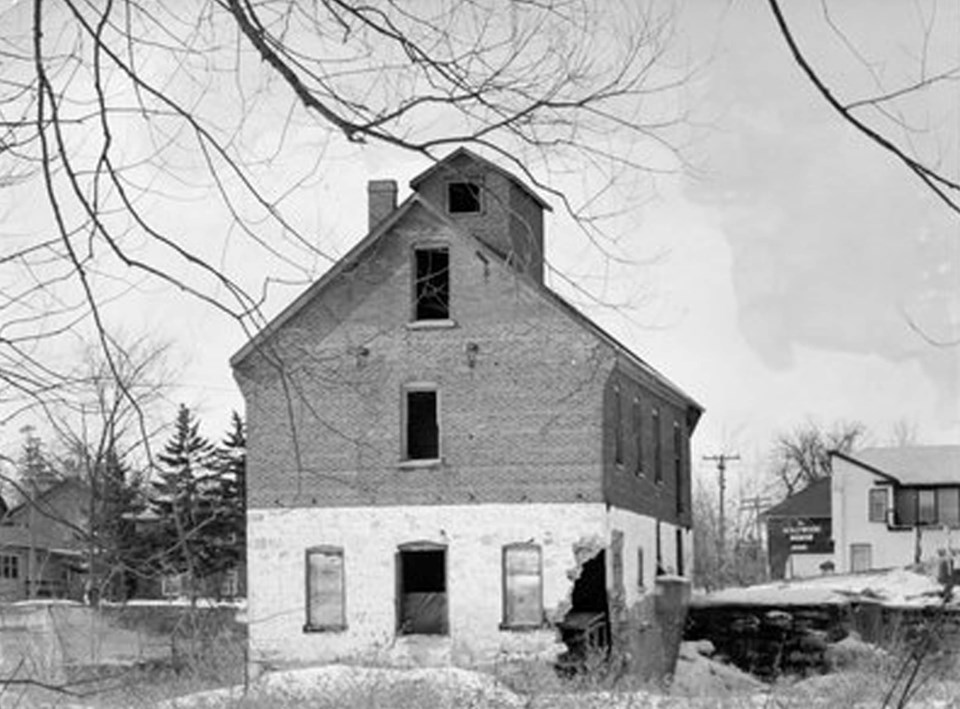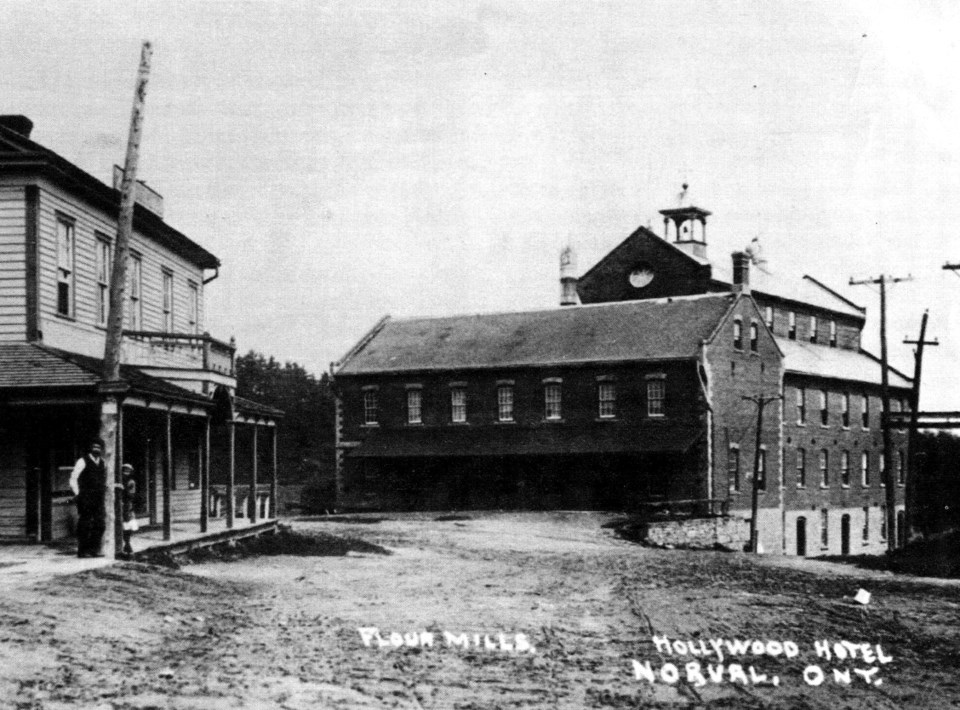Milling was once the main industry in most of Ontario’s early communities, and Norval was no exception.
The village of Norval was settled in 1820 by John McNab and his sons, Scottish settlers who came from Vermont. The site of Norval, originally known as McNabville, was chosen because of the powerful Credit River that passed through the area, which in turn was an ideal location to set up a mill.
By 1828, one of McNab’s sons, James, dammed a section of the Credit River and built a wood frame grist mill, which served as a place where local farmers would sell their grain to be made into flour. In addition to the grist mill, a saw mill was also built.
Shortly after the grist mill’s opening, James suffered an unfortunate accident where a mill stone slipped and crushed his leg, which had to be amputated above the knee.
Due to James’ accident and inability to operate the mills in his condition, he leased them to John Barnhart in 1830, but they were eventually sold in 1838 to General Peter Adamson. Adamson’s son-in-law, Colonel Mitchell, oversaw running the mills.
From 1845 to 1859, the grist mill was leased to distillers Gooderham and Worts of Toronto. After Gooderham and Worts, Robert Noble of Carlisle, England purchased the mills in 1868 from the Bank of Ontario, which had control of the property by this time.
Noble, reputed to be the last miller in Canada with faith in the old stone grinding system, was well-acquainted with the grist business in England. Upon arrival to Canada in 1852, he apprenticed in Dundas and eventually managed mills at Elora and Freelton before purchasing the mills in Norval.
Noble and his son, Colonel Alexander Noble, steadily increased the mill’s production, eventually to become known throughout the Dominion and internationally for their “Norval” pastry flour and “King’s Choice” bread flour. After 1856, the mill was serviced by the Grand Trunk Railway, which had its station about 1.5 km north of the village.
In order to keep up with demand, in 1880, Noble rebuilt the mills and by 1899, changed from mill stones to the modern roller system. In 1909, the Grand Trunk Railway reported an average of 700 barrels of flour were being carried daily to the station from Noble Mills.

The Noble family owned the mills for 55 years until selling in 1923 to W.B. Browne & Co. of Toronto by the Bank of Nova Scotia, which had taken possession through the failing of W.J. Campbell.
Tragedy struck when the flour mill was destroyed by fire on January 28, 1930, but the grist mill was spared. The Georgetown Herald reported over $200,000 in damages and 100,000 bushels of grain were destroyed. The grist mill would continue operating under Browne & Co. until 1952.
In October 1954, Hurricane Hazel hit Norval with a fury and caused the Credit River to rapidly rise, which severely damaged a corner of the grist mill’s foundation. After sitting abandoned for seven years, the structure was eventually demolished in 1961 when Highway 7 was widened. The remaining mill site was removed in the early 1970s following further alterations to the highway.
Article written by Scott Brooks, with information from The Georgetown Herald/HHPL/Halton Sketches.



